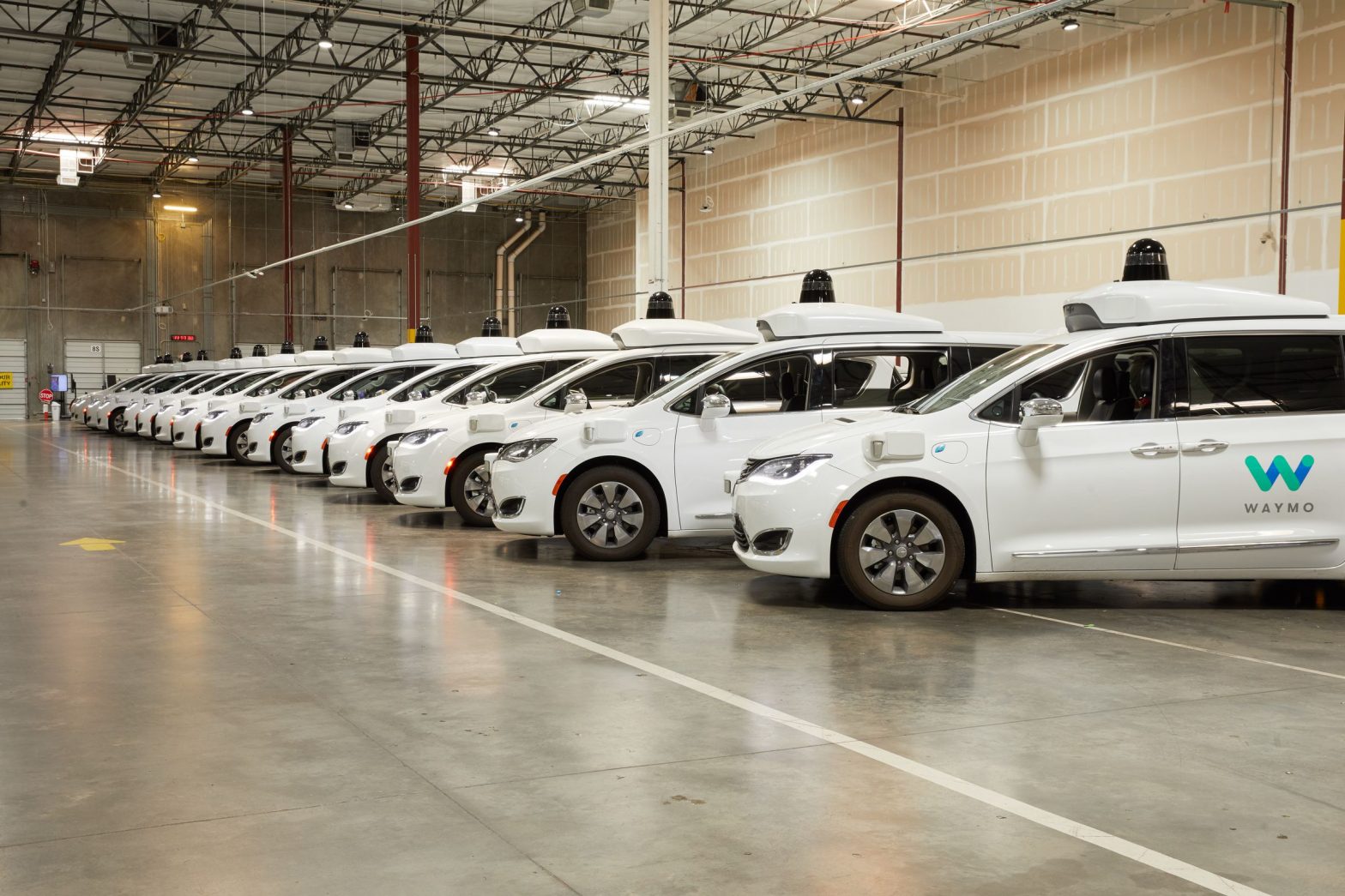/
The Alphabet-owned AV operator said it would phase out its autonomous minivans in favor of the all-electric Jaguar I-Pace SUV.
:format(webp)/cdn.vox-cdn.com/uploads/chorus_asset/file/12324051/Waymo_vehicles_in_depot.jpg)
Waymo’s Chrysler Pacificas are heading off into the sunset.
On Thursday, the Alphabet-owned autonomous vehicle operator announced it was phasing out the plug-in hybrid minivans it had been using for the last seven years. Instead, Waymo will rely on the all-electric Jaguar I-Pace as a platform for the fifth generation of its “Waymo Driver,” which is the branding the company uses to describe its autonomous driving hardware and software stack that enable its vehicles to drive without a person behind the steering wheel.
“For many, hailing a fully autonomous ride with Waymo may be the easiest way to access an EV,” the company said in a blog post. “Our growing ride-hailing service not only increases sustainable transportation options, but also offers Waymo’s safety benefits to the communities we serve.”
The impetus for the decision was Waymo joining the Biden administration’s White House EV Acceleration Challenge to spur more businesses to switch to all-EV fleets. But the company’s reliance on gas-powered vehicles has increasingly become an outlier in the AV industry.
Competitors have fleets that are mostly or entirely comprised of electric vehicles: Cruise uses Chevy Bolts; Zoox’s purpose-built robotaxi is all-electric, though the company still relies on gas-powered Toyota Highlanders as test vehicles; and Motional is in the process of transitioning to a fleet of electric Hyundai Ioniq 5s.
:format(webp)/cdn.vox-cdn.com/uploads/chorus_asset/file/22309275/vpavic_4412_20210111_0004.jpg)
The decision is also likely being shaped by the states in which Waymo operates, namely California, which passed a bill in 2021 requiring all AVs operating on public roads to be electric by 2030. California is ground zero for AV testing in the US, with over 50 companies licensed to operate autonomous vehicles for testing purposes in the state. Waymo operates a robotaxi service in San Francisco and has plans to launch another service in Los Angeles as well.
Some AV operators have argued that electric vehicles are a bad fit for self-driving cars because of the extended charging requirements and the impact on a vehicle’s “uptime.” In order to make a profit, autonomous vehicles need to maximize their time on the road delivering people or packages; otherwise, they’re likely to be a money-loser. EV charging can take 40 minutes or longer depending on the status of the battery and the power output of the charger — precious time lost for a fleet vehicle.
In many ways, Waymo’s deal with then-Fiat Chrysler in 2018 to purchase “thousands” of Chrysler Pacificas seems like an artifact from a different time, when the rhetoric about the expected wave of AVs on public roads was at its peak. In May of that year, the company said it struck a deal with FCA (now Stellantis) to purchase 62,000 minivans to grow its fleet exponentially. This was several months after Waymo announced a partnership with Jaguar Land Rover (JLR) to acquire 20,000 I-Pace SUVs.
But Fiat Chrysler never ended up delivering the full order of minivans; less than 1,000 minivans with Waymo’s “Driver” hardware and software stack were built, most of which were deployed in Arizona’s East Valley for testing and ultimately a ridehailing service called Waymo One. The company soon shifted focus to the I-Pace as its primary vehicle.
:format(webp)/cdn.vox-cdn.com/uploads/chorus_asset/file/24217227/226414_Waymo_Zeekr_ABassett_0001.jpg)
And now the minivans will be no more. A handful of Chrysler Pacificas in Waymo’s fleet will be retained for historic purposes, while the rest will be “recycled,” a spokesperson for the company said.
In addition to the Jaguar I-Pace, Waymo plans on adding a new EV to its fleet, an all-electric van made by Geely’s Zeekr brand. A prototype is expected to be delivered by the end of 2023.
